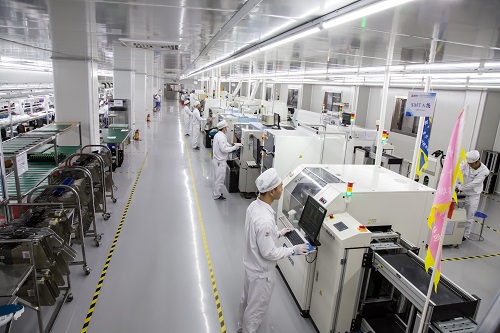About us
FASTPCBA Co.,Ltd
-
 Building 1, Senyang Electronic Technology Park, Guangming High-tech Park, Yutang Street, Guangming District, Shenzhen City.
Building 1, Senyang Electronic Technology Park, Guangming High-tech Park, Yutang Street, Guangming District, Shenzhen City.
-
 F:86-13418481618
F:86-13418481618
-
 pcba13@fastpcba.cn
pcba13@fastpcba.cn
 date:2020-11-17 16:20:20
date:2020-11-17 16:20:20
As users seek more effective technologies, the popularity of SMT and SMD has steadily increased. Surface Mount Technology (SMT) is essentially a method of placing components on a circuit board. Modern SMT assembly technology is smaller, more efficient and faster to operate. Surface Mount Device (SMD) is the actual component mounted on the circuit board according to the specific component.
SMT and SMD are often confused and sometimes used interchangeably. Indeed, technology and actual components can be deeply intertwined and cause confusion. This is why it helps to distinguish SMT components from specific SMD components. The two processes go hand in hand to help users obtain faster, more energy-efficient, and more reliable PCBs.

What is SMT (Surface Mount Technology)?
SMT (Surface Mount Technology) is a new method of placing components on printed circuit boards. Many years ago, electricians and engineers used lead-through holes to assemble circuit board components. Careful preparation must be made to ensure that all leads are formed in the correct way to fit various types of circuit boards. SMT assembly is a more efficient process in which components are soldered directly to the board. By eliminating the need to pass leads through the PCB, the process becomes faster, more efficient and more cost-effective. SMT assembly also saves space, allowing more components to be accommodated on a smaller board. This is why many modern devices are small but have many functions.
SMT is a very complex process, in which each component is strategically positioned and mounted on the circuit board to achieve the best function. This is one of the reasons why SMT and SMD overlap. Having effective electrical equipment requires a combination of appropriate component selection and installation strategies. During SMT, before the machine carefully installs each component, a calculated amount of solder paste is applied to the board. As mentioned earlier, it is more effective to mount components directly on the surface than to route them through the board. Direct mounting is also the reason why the entire circuit board runs faster and has a smaller surface area.
Surface mount technology also opens up the possibility of automation. The machine can be programmed to install the selected components directly on the PCB in a short time. This means that the production process is faster, the quality is higher and the risk is greatly reduced.
What is SMD (Surface Mount Device)?
SMD (Surface Mount Device) is the actual component mounted on the printed circuit board. In a world that requires faster, more flexible, and more cost-effective components, SMD has made great strides. Now, the pins used by newer SMDs can be soldered directly to the PCB instead of using leads and routing through the circuit board. There are many advantages to using pins over leads. For example, smaller components can be used to achieve the same function. This means that more components can be mounted on a smaller circuit board and functionality can be increased. And because there is no need to drill holes in the board, the installation process is faster and more cost-effective.
The key to getting a powerful device is to choose the right SMD. It is best to consider the components that are most suitable for the PCB and the mounting strategy/layout process that best suits your target device. They have come a long way since the SMDs were manually (hand) soldered to the circuit board. Today, SMDs (such as resistors, ICs and other similar components) can be automatically mounted on the surface of the PCB. By using the correct layout process, SMD can operate at an efficient level for a longer period of time.
SMT makes SMD more effective
Although the main difference between SMT and SMD is that one refers to the installation process and the other refers to the actual components, they overlap in many places. For example, the correct selection and placement of SMD is actually the main process behind SMT. SMT assembly is a workflow or strategy for using SMD more effectively.
Using the right technology can greatly improve your prototype. For example, automatic SMT machines can mount thousands of SMDs on circuit boards in a short time. In addition, the SMD selected for the manufacturing process will determine the effectiveness and effectiveness of the entire SMT. You can also think of SMT and SMD overlap as one of time and space. SMD determines the physical capacity of the electronic board (area), while SMT installs these components on the board in time.
 Building 1, Senyang Electronic Technology Park, Guangming High-tech Park, Yutang Street, Guangming District, Shenzhen City.
Building 1, Senyang Electronic Technology Park, Guangming High-tech Park, Yutang Street, Guangming District, Shenzhen City.
 F:86-13418481618
F:86-13418481618
 pcba13@fastpcba.cn
pcba13@fastpcba.cn